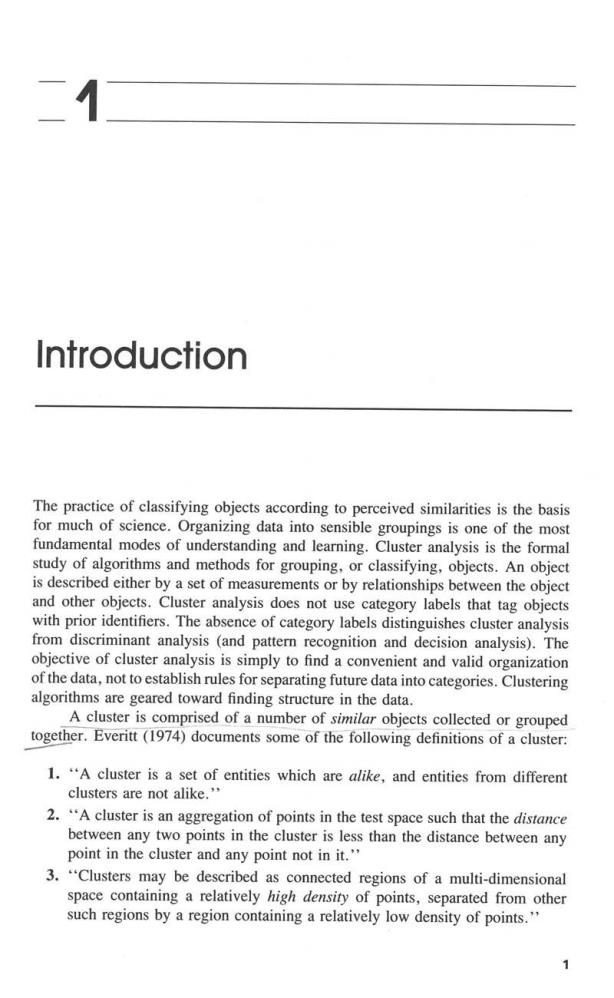正在加载图片...

二1 Introduction The practice of classifying objects according to perceived similarities is the basis for much of science.Organizing data into sensible groupings is one of the most fundamental modes of understanding and learning.Cluster analysis is the formal study of algorithms and methods for grouping,or classifying,objects.An object is described either by a set of measurements or by relationships between the object and other objects.Cluster analysis does not use category labels that tag objects with prior identifiers.The absence of category labels distinguishes cluster analysis from discriminant analysis (and pattern recognition and decision analysis).The objective of cluster analysis is simply to find a convenient and valid organization of the data,not to establish rules for separating future data into categories.Clustering algorithms are geared toward finding structure in the data. A cluster is comprised of a number of similar objects collected or grouped together.Everitt (1974)documents some of the following definitions of a cluster: 1."A cluster is a set of entities which are alike,and entities from different clusters are not alike.'' 2."A cluster is an aggregation of points in the test space such that the distance between any two points in the cluster is less than the distance between any point in the cluster and any point not in it. 3."'Clusters may be described as connected regions of a multi-dimensional space containing a relatively high density of points,separated from other such regions by a region containing a relatively low density of points." 1